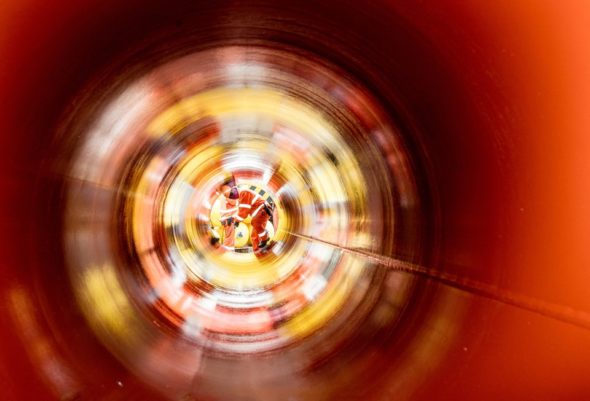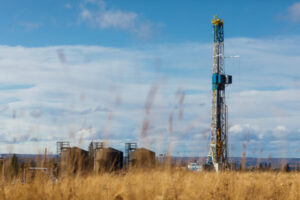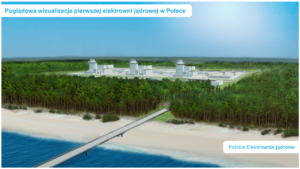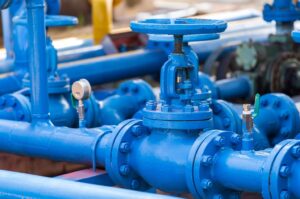Russians barely managed to put together a fleet that installed a little over 2.6 km of Nord Stream 2 in the shallow waters of the German Exclusive Economic Zone (EEZ). Now the project is facing a more difficult test in the deeper waters of the German and Danish EEZs . It looks like the investors themselves don’t know when and how they will be able to complete the contentious pipe – Mariusz Marszałkowski, editor at BiznesAlert.pl, writes.
Fortune is smiling on Nord Stream 2?
The Fortuna barge took the challenging task of building a short – 2.6 km long – section of the gas pipeline in the German EEZ. It arrived at the construction site on the 11th of December, but it did not start laying the pipes immediately. The crew took a few days to prepare, so that the entire process would run smoothly and safely. The pipe-laying for the first line of the Nord Stream 2 gas pipeline started on the 16th of December and ended on the 24th. Within 9 days the barge laid 2.6 km of the pipeline, which gives an average of about 350 m a day. This is a lot less than the 1.5 km daily, which was announced at the beginning of the construction by the pipe’s operator – Nord Stream 2 AG. Contrary to expectations, after the 2.6 km were done, the workers did not get down to completing the twin pipe of the same length.
On the 25th of December, Fortuna, accompanied by two other vessels – Umka and Katun, headed for the Wismar harbor in which it had stayed for the last six months. The aim of this voyage is unknown. However, DP Gezina, a walk to work vessel which is a kind of an offshore hotel for crews working at sea, is reportedly stationed near Fortuna, which may mean the crew that had worked on the barge for the last two weeks left or was replaced. BiznesAlert.pl reported that Russians had already confirmed that the construction of the German section had been completed.
On the 21st of December, the Danish Maritime Authority announced that the construction of Nord Stream 2 in the Danish EEZ can start on the 15th of January 2021. Fortuna will do the pipe laying, together with the Baltiysky Issledovatel and Murman vessels, as well as supply and auxiliary ships. A zone where maritime traffic will be limited was designated within a 1.5 nautical mile radius of the construction site.
What about Akademik Cherskiy?
The situation on the Akademik Cherskiy ship is still unclear. The vessel, which was supposed to have built the missing 160 km of the pipeline, is still sitting in Russia’s EEZ, close to the Curonian Spit. A few anchor handling tug vessels, supply and research ships are close to that location as well. This has been the case since mid November, when the vessel had left the Mukran port in Germany, which is the project’s logistics hub. In that port, the Akademik Cherskiy went through a quick modernization and modification, which included replacing the majority of electronic and navigational systems, welding and test systems, as well as anchors.
However, according to the Danish Maritime Authority, the ship that will lay the pipes in Germany’s EEZ will be Fortuna. It is unknown whether this barge has already gone through the required tests, and whether it has the necessary certificates to work in the Danish waters. This situation also shows the difficulties Russia has with assembling a fleet capable of building the gas pipeline. Akademik Cherskiy and the supply vessels that arrived from the far east, anchor handling tug vessels from the Arctic and the Black Sea, research vessels that in reality are rescue boats quickly upgraded to do research and surveys. Even though it was very expensive to upgrade the ships and gather them in the Baltic, at this point the work is being done by a vessel that has been sitting in the Baltic for the past two years anyway, and its ability to be efficient with projects such as Nord Stream 2 is very limited.
Akademik Cherskiy, which is the only vessel with a dynamic positioning system in Russia’s fleet of ships capable of pipelaying, received expensive equipment to use anchors for positioning during pipelaying activities.
U.S. sanctions
The race against time with regard to the next round of American sanctions is still on. The extended sanctions included in the Pentagon’s spending bill did not enter into force, because of president Donald Trump’s veto. The veto was rejected, but it will postpone the entry of the new regulations into force.
It seems that Gazprom wants to finish the construction of at least one string of Nord Stream 2 before the widened sanctions enter into force. The sanctions won’t impact the construction in the German EEZ, because the depth in that section does not exceed 31 meters, which are designated in the bill. Whereas, the depth in the Danish zone exceeds 50 meters, which means any vessels working there will be subject to the sanctions. Nord Stream 2 AG has not yet provided an updated work schedule required by the Danish Energy Agency. This may mean that even the investor still doesn’t know when and how the controversial investment will be pursued.
America’s consistency about extending the sanctions is an important factor in the puzzle. They will not determine whether Nord Stream 2 will be finished or not, but they may be of key importance for the potential economic profitability and go-live of the project. Re-starting the construction achieved a propaganda goal. Russian professional media gleed at the news about the added meters of the pipe. However, the pace of the pipelaying shows that the soap opera will drag on. The 2.6 km of the gas pipeline that was built within nine days with an average of 400 m a day, offers a bleak glance into the future of the Nord Stream 2 gas pipeline. Considering that the pipeline is still missing about 150 km of both lines, the construction may take over 300 days if only the Fortuna barge is used. To compare, Allseas’s Solitaire would built such a section within 37 days (4 km a day on average), whereas the Pioneering Spirit would complete the task within 25 days only (5.5-6 km a day).
Akademik Cherskiy may provide the much needed rescue, as at some stage of the project it could join Fortuna, but currently nothing points to the fact that this would be possible soon. Time is the project’s enemy, because Joe Biden’s administration will have more of it to properly react. Today, a tug of war is happening between the supporters of the project in Berlin and Moscow and its opponents in Washington, Warsaw and Kiyv, and so far, the result is not sure yet.









